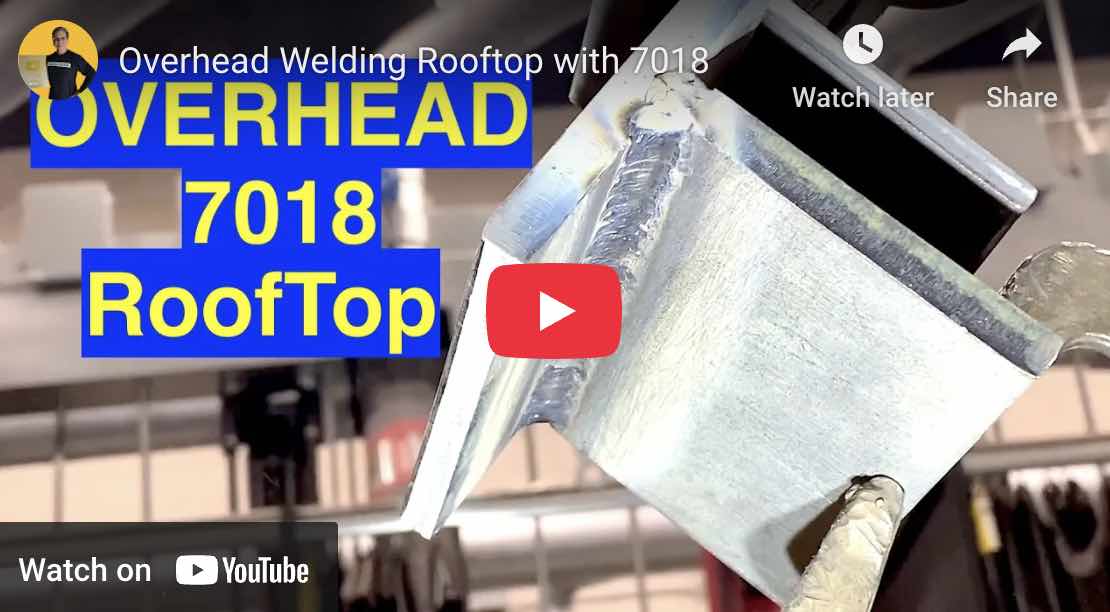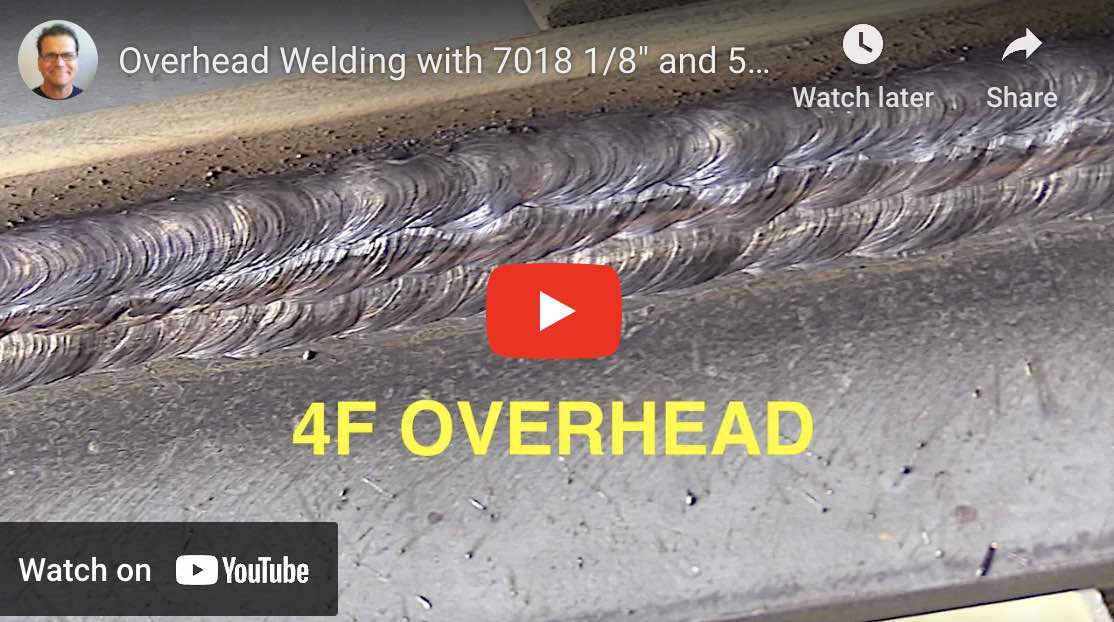Stick Welding Overhead Rooftop Tee with 7018..
Scroll down for video
- HOME
- STICK WELDING
- Stick Welding Overhead Rooftop
Here is a quick video showing an overhead rooftop tee joint welded using 7018 3/32" at 90 amps.
A rooftop overhead tee joint resembles the bottom portion of a pipe joint and helps prepare a student for pipe welding in the 5g position
here is my best advice for overhead stick welding with 7018:
"Set the amperage within the recommended range for the diameter of electrode used but set amperage high enough that the rod wont stick when holding a tight arc..then make sure to hold a tight arc."
Overhead welding, as the name suggests, involves welding in a position where the weld joint is located above the welder's head. This position can be more challenging than other welding positions (such as flat or vertical welding) because gravity can cause molten metal and slag to fall down onto the welder, making it more difficult to maintain proper control and produce a quality weld.
Here are some key points to consider when performing a rooftop weld in overhead stick welding:
- Electrode Angle: To ensure proper penetration and control of the molten metal, the welder needs to use the correct electrode angle. Typically, a slight drag angle (with the electrode pointed slightly upward) is used to help control the molten metal and slag.
- Arc length and amperage: Set the amperage within the recommended range for the diameter of electrode used but set amperage high enough that the rod wont stick when holding a tight arc..then make sure to hold a tight arc.
- Travel Speed: Maintaining the right travel speed is crucial in overhead welding. Moving too fast can result in insufficient penetration and undercut, while moving too slowly can lead to excessive build up.
- Electrode Selection: usually a welding procedure will specify the type of electrode but sometimes a procedure will allow the welder options for electrode diameter.
- Proper Bead Shape: Achieving the desired bead shape (usually a sligthly convex or slightly crowned appearance) is important for a successful rooftop weld. This shape indicates good fusion and penetration into the base metal....and also provides a base for multiple passes on thicker metal.
- Protective Gear: Overhead welding requires adequate protective gear, including a welding helmet with a proper filter shade to protect the eyes, as well as clothing and gloves that can shield the welder from any falling slag or sparks.
- Welding Position: Welders need to adopt a comfortable and stable position when performing overhead welding to maintain control and reduce fatigue. This might involve using a clamp for a prop or setting up the workpiece at an appropriate height.

















